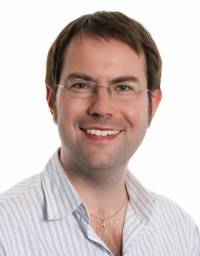Dr Stephen Bates - ePortfolio
S dot M dot J dot Bates at warwick dot ac dot uk
These pages reflect my time as a PhD candidate. My thesis, 'Re-imagining the Virgin Mary in Reformation England', was successfully defended in February 2014: my examiners were Professor Beat Kümin and Professor Miri Rubin.
About me
I graduated in Law from the University of Aberystwyth in 1992 and went on to complete a Masters in Business Law before taking the Legal Practice Diploma at the College of Law, Chester, in 1995. After working as a para-legal, I started my own IT consultancy in 1998, OpenWeb Computing Limited. However, I found the commercial environment unrewarding and lacking in intellectual challenge and in 2007 I took a sabbatical, embarking on a MA in History here at Warwick. In doing so I hoped to test my own academic pretensions, and also ensure that my desires to research, write and teach were not founded on a misplaced sense of nostalgia. It was a very successful and highly enjoyable year and, subsequently, I went on to pursue my PhD.
For many years I have been active in my community helping to run youth groups and associated holiday camps. This has ranged from sex and relationship education in schools, through to facilitating discussion on philosophical and ethical issues among small groups of teenagers. I am also a trustee of a local charity, Family Equip, which supports children and young people with autism and Asperger's, and their families.
I am happily married to Laura, who works as a community psychiatric nurse with Redditch Child and Adolescent Mental Health Services.
About my research
My thesis involved an examination of the cultus of the Virgin Mary during the English reformations of the sixteenth century. During the later Middle Ages, Mary had evolved into a central religious figure for Europe’s Christians, perhaps competing with Christ himself. As an intercessor for individuals and communities, she was the 'neck' that connected the body of the Church with the Godhead of the Trinity. Shifting patterns of devotion as lay people defined their own spirituality led to speculation and pluralism in medieval Mariology. Mary’s role in the incarnation and her soteriological relationship with the Church lacked clarity. Consequently, re-imagining Mary was an objective of Catholic evangelicals, Renaissance humanists and Protestant theologians.
This project built on and developed my MA dissertation, which explored the Marian cult during the restoration of Mary Tudor. My MA study equipped me with the methodological, linguistic and palaeographical skills to broaden my survey to investigate competing representations of Mary, addressing the following research questions: what trajectory was the Virgin's cult on at the start of the sixteenth century? What criticisms and alternative images did Catholic reformers, humanists and Protestants present? How did the English ecclesiastical authorities respond? Did popular piety and elite Mariology inform one another? Did traditional Mariology survive in the parishes? Did the English politicise Mary or use her as a banner for identity? Are such attitudes useful for the historian in evaluating the birth of confessionalism?
While this research engaged with developments in art and music, and the popularity of cultural centres such as Walsingham, Protestant iconoclasm has left little Marian imagery for the historian. Consequently, the main set of primary sources for elucidating policy making and patterns of piety will be printed tracts and treatises, diaries, letters, sermons, plays and ballads, contemporary chronicles and state papers.
Twenty years ago, Michael Carroll asserted that few would, ‘Quarrel with the assertion that the Roman Catholic emphasis upon Mary is one of the things that most distinguishes the Roman Catholic Church from other Christian groups. All the more surprising, then, that scholarly studies of the Mary cult are so few’ (Carroll, 1986). Subsequently, historians have done a little to rectify the general neglect of the subject (Hackett, 1995; Ellington, 2002; Rubin, 2009). Recent historiography has fruitfully focused on the Marian cult in Reformation Germany (Kreitzer, 2004; Heal, 2007), but the significance of the theme for illuminating the course of religious change in England remains a major lacuna.
Supervisor: Professor Peter Marshall
Fellow of the Academy for Advanced Study in the Renaissance
I was awarded a fellowship for the inaugural year (2013) of the Academy for Advanced Study in the Renaissance, generously financed by an Andrew W. Mellon Foundation Distinguished Achievement Award. The fellowship involved study at the University of Oxford, the Shakespeare Institute, the American Academy in Rome, the Institute for Advanced Studies of L’Orientale University of Naples and the European University Institute in Florence. The Fellowship was convened by Professor Ed Muir and Professor Regina Schwartz.
Warwick Newberry
I represented the Centre for the Study of the Renaissance at the Newberry Multidisciplinary Graduate Student Conference in January 2012. You can read my conference report on the Centre's website. My paper 'Turning 'wyne into water': the Erasmian re-imagination of the Virgin Mary' was one of those selected for publication in the Newberry's published conference proceedings.
Forms of Conversion
I was appointed a Research Assistant on the SSHRC-funded 'Forms of Conversion' project in the summer of 2011. With a working title of 'Evangelical Conversion in its Late Medieval Context', I was tasked with examining the discourses surrounding the first generation of English converts to "Protestantism", c.1520-1550, with particular regard for social, ecclesiastical and devotional milieux from which such conversions emerged. This research complemented my investigations into the place of the Virgin, which are positioned within broader questions of religious paradigm formation, including the phenomenon of 'conversion'.

I was delighted to receive 3rd Prize in the Department of History's 2010 ePortfolio Competition.
 who came second, and Harriet Palfreyman
who came second, and Harriet Palfreyman who won.
who won.

